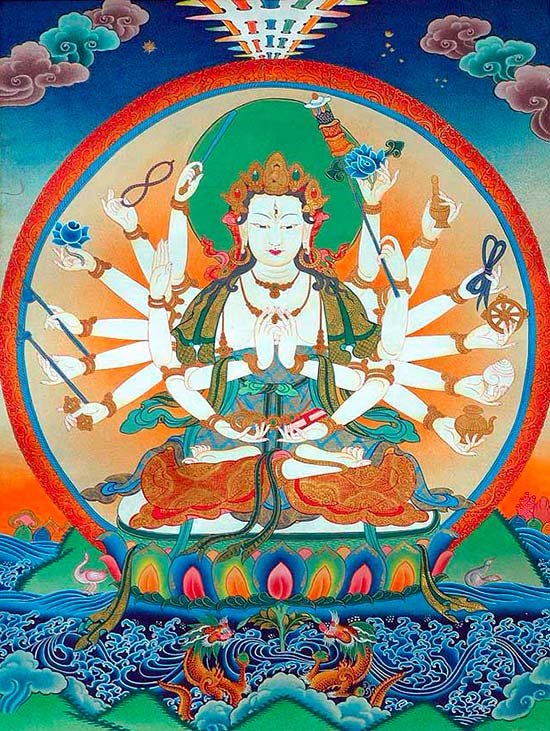Maha Prajnaparamita Sastra
by Gelongma Karma Migme Chödrön | 2001 | 941,039 words
This page describes “dharma skillfully presented” as written by Nagarjuna in his Maha-prajnaparamita-sastra (lit. “the treatise on the great virtue of wisdom”) in the 2nd century. This book, written in five volumes, represents an encyclopedia on Buddhism as well as a commentary on the Pancavimsatisahasrika Prajnaparamita.
II.1. Dharma skillfully presented
It is skillfully presented because it is not contradictory to the two truths (satyadvayāvirodhāt), i.e., the conventional truth (saṃvṛtisatya) and the absolute truth (paramārthasatya). The wise man (vijña) cannot refute it and the fool (bāla) cannot criticize it.
This Dharma is also free of the pairs of extremes (antadvaya), i.e., a life attached to the five objects of enjoyment and pleasure (pañcakāmaguṇeṣu kāmasukhallikānuyoga) or a life of personal mortification (ātmaklamathānuyoga).[1]
It is free of other pairs of extremes: eternalism (śāśvata) and nihilism (uccheda), self (ātman) and non-self (anātman), existence (bhava) and non-existence (abhava). Because it is not attached to these pairs of extremes, the Dharma is said to be ‘skillfully presented’.
Heretics who boast of their own system (svadharmotkarṣa) and denigrate the systems of others (paradarmapaṃsaka) cannot express themselves skillfully.
Footnotes and references:
[1]:
See above, p. 23F, 396F, 655F, 1354F.
